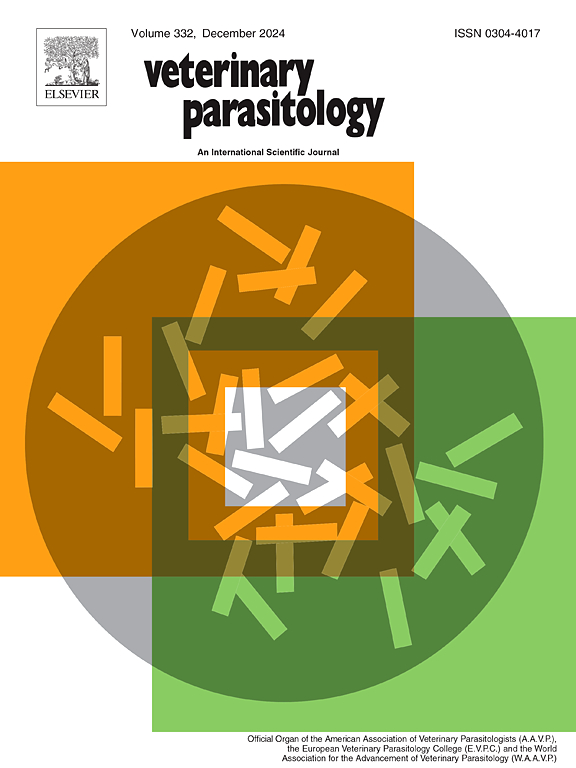Rapid and sensitive detection of Trichomonas gallinae using RAA-CRISPR-Cas12a
IF 2
2区 农林科学
Q2 PARASITOLOGY
引用次数: 0
Abstract
Trichomonas gallinae (T. gallinae) is an important pathogen causing trichomoniasis in birds, especially pigeons. Rapid and sensitive detection methods for T. gallinae are urgently needed to diagnose T. gallinae early to reduce poultry industry losses. Therefore, we developed a rapid and sensitive diagnostic method based on recombinase-aided amplification (RAA) assay and clustered regularly interspaced short palindromic repeats (CRISPR) and CRISPR-associated protein 12a (CRISPR/Cas12a) system to detect T. gallinae. The RAA-CRISPR/Cas12a method can be divided into RAA-CRISPR/Cas12a fluorescent signal (RAA-CRISPR/Cas12a-FL) and RAA-CRISPR/Cas12a lateral flow strip (RAA-CRISPR/Cas12-LFS). Both RAA-CRISPR/Cas12a-FL and RAA-CRISPR/Cas12-LFS methods show the property of rapid. sensitive, and does not require a sophisticated instrument, and they allow the detection of T. gallinae in less than 1 hr. Meanwhile, they have satisfactory specificity and can accurately detect T. gallinae in samples of different pathogens. In summary, the RAA-CRISPR/Cas12a-FL and RAA-CRISPR/Cas12-LFS methods we constructed can be used for on-site T. gallinae detection and resource-poor areas.
求助全文
约1分钟内获得全文
求助全文
来源期刊

Veterinary parasitology
农林科学-寄生虫学
CiteScore
5.30
自引率
7.70%
发文量
126
审稿时长
36 days
期刊介绍:
The journal Veterinary Parasitology has an open access mirror journal,Veterinary Parasitology: X, sharing the same aims and scope, editorial team, submission system and rigorous peer review.
This journal is concerned with those aspects of helminthology, protozoology and entomology which are of interest to animal health investigators, veterinary practitioners and others with a special interest in parasitology. Papers of the highest quality dealing with all aspects of disease prevention, pathology, treatment, epidemiology, and control of parasites in all domesticated animals, fall within the scope of the journal. Papers of geographically limited (local) interest which are not of interest to an international audience will not be accepted. Authors who submit papers based on local data will need to indicate why their paper is relevant to a broader readership.
Parasitological studies on laboratory animals fall within the scope of the journal only if they provide a reasonably close model of a disease of domestic animals. Additionally the journal will consider papers relating to wildlife species where they may act as disease reservoirs to domestic animals, or as a zoonotic reservoir. Case studies considered to be unique or of specific interest to the journal, will also be considered on occasions at the Editors'' discretion. Papers dealing exclusively with the taxonomy of parasites do not fall within the scope of the journal.
 求助内容:
求助内容: 应助结果提醒方式:
应助结果提醒方式:


